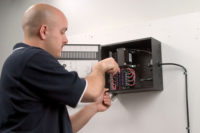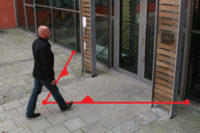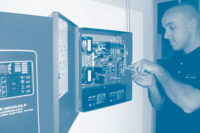Designing power specifically for the application is the best way to go. SDM subscribers were asked, via an Internet survey, about how they select batteries and power supplies. Reliability came through as an important factor in the selection process and some 25 percent cited this as a consideration in choosing a power supply or battery. Reliability also may relate to proper application specifications. Martin Souder, owner of T&M Alarm in Rome, Ga., offered this tip to his colleagues considering purchasing a new power supply: “Find the best supply for the specific application. Size and life are important, and don’t ‘undersize’ for the job.â€
Bill Hass, customer care technician for ASG/Aronson Security Group Inc., Seattle, goes one step further in providing this advice: “Always add 25 percent more capacity than you think you need,†if possible when purchasing a new power supply. On selecting a new battery, he says, “Make sure the power supply can charge the battery and always check the loads.†He warns of under-sizing the power supply for the application.
Sidebar
Before You Purchase
Selecting the correct power supply or battery for a project is critical. Alan Forman,president of Altronix Corp., Brooklyn, N.Y., offers these tips to installing dealers:
• Check the specifications for the tolerance
of the voltage.
• Find out the continuous current amount when invoking magnetic lock
or pan-tilt-zoom or other controls.
• Make sure the power supply can handle surges or has spike protection.
• Calculate the voltage drop for long paired wire runs (Altronix has an on-line calculator for this). The voltage drop is the amount of voltage lost between the originating power supply and the device being powered.
• Investigate the compatibility to interface with other devices seamlessly.
• For power-limited wiring, don’t exceed the current at the prescribed voltage.
Sidebar
Avoid these Pitfalls
SDMasked dealers and installers: What one pitfall can you warn your colleagues to avoid when purchasing a new power supply?• Don’t let specs fool you. Verify the unit’s specs match what unit is fused at. (For example, it may be rated as 2A P/S, but fused at 1 or 1.5A.)
• Make sure it is a regulated power supply and it matches the equipment you want to use it with.
• It must be able to monitor the AC and DC
side for trouble.
• Avoid unsupervised supplies that do not
report a low battery when it occurs, before it
causes a false alarm.
• What one pitfall can you warn your colleagues to avoid when purchasing a new battery?
• Don’t buy the cheapest battery on the market.
• Purchase an adequate size for the application.
• Do not overcharge the battery the first time you charge it.


